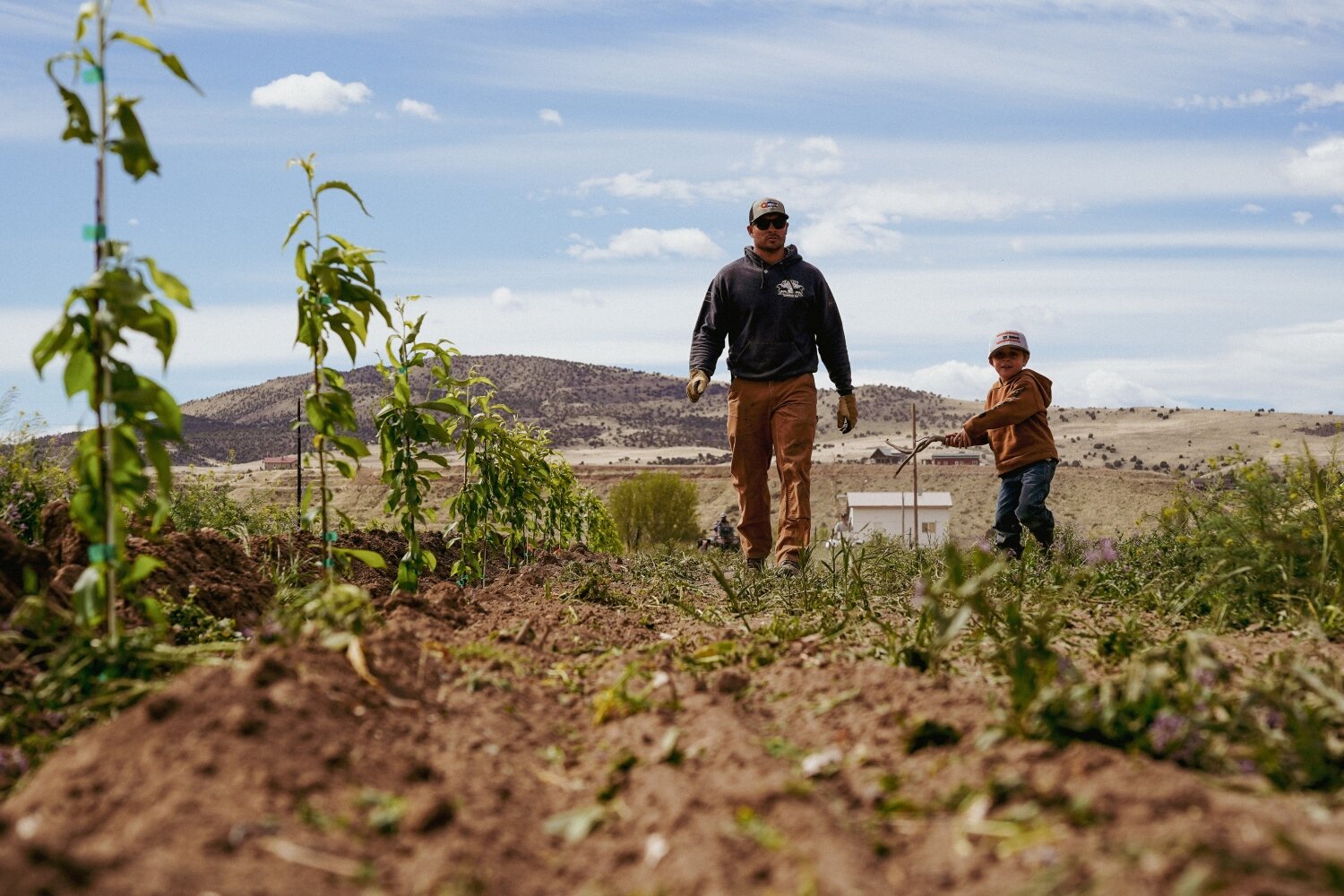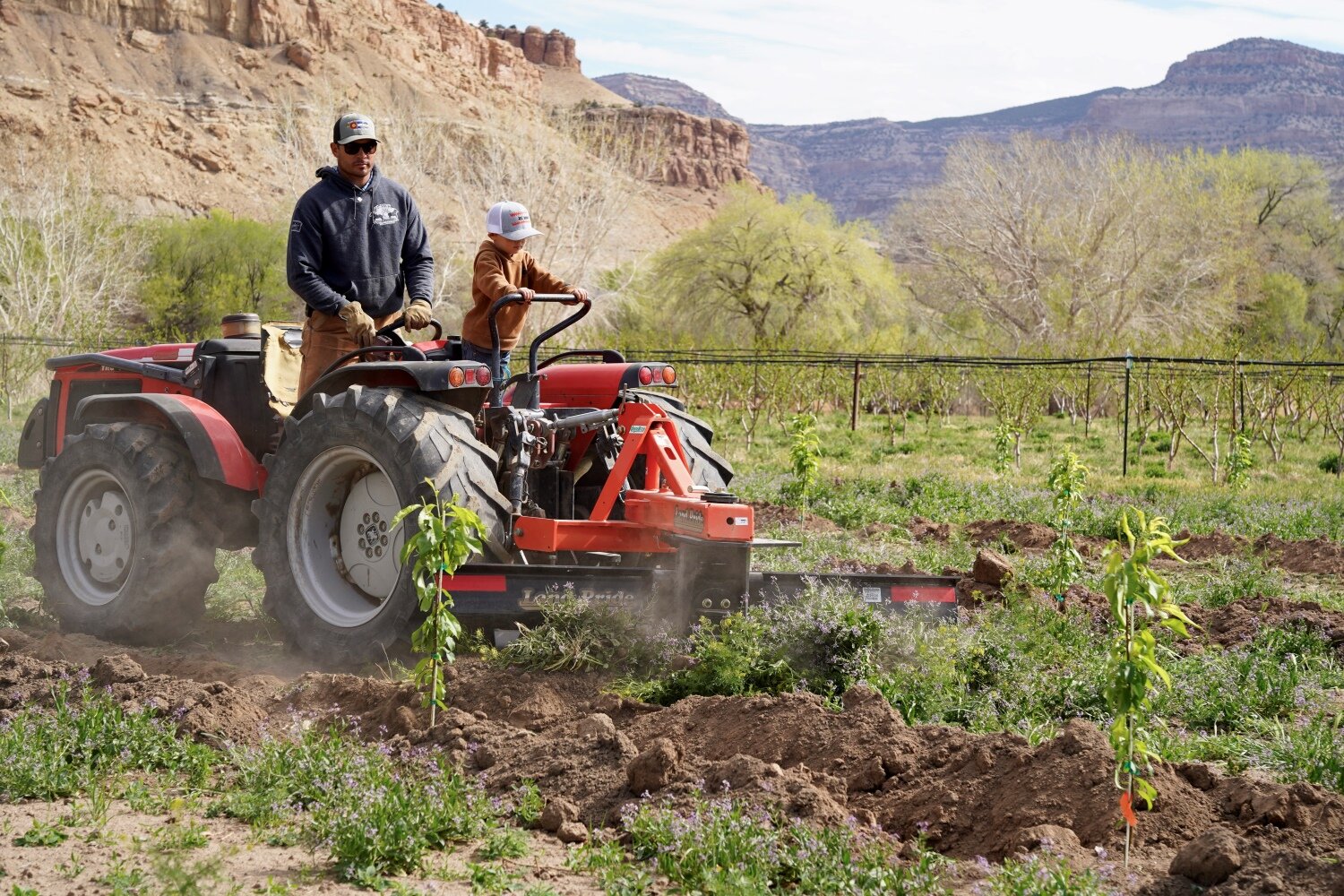Millions of peaches, peaches for me: Palisade farmers prepare for busy season

Rocky Mountain PBS is producing a documentary about the peach industry in Palisade. This and other stories will examine the business and culture around peaches throughout the year.
PALISADE, Colo. — Spring is a busy time on any farm, especially a peach orchard. Just ask Chris Schmalz at Clark Family Orchards.
Besides planting hundreds of new trees, Schmalz is fixing irrigation systems and contacting buyers for this year’s peach crop, hoping to get it all sold before the fruit is done growing.
“This time of year, it's getting your ducks in a row,” Schmalz said. “When you're planting all these trees, you got to have somewhere to sell the fruit."
The fruit industry in Palisade is hard to miss. The orchards, vineyards and packing sheds sprawl out from the tiny downtown, everything visible to drivers on nearby Interstate 70. The dramatic change in landscape from De Beque Canyon marks the beginning of the Grand Valley.
In Mesa County, fruit products generate $22 million in sales each year, according to the 2023 business economic outlook from the University of Colorado Boulder.
Along with prepping orchards to grow crops, farmers still have Colorado’s often unpredictable weather to contend with. The last frost date for Palisade is usually in mid-May.
Most peach trees are protected by wind machines that stir up air in an orchard, raising the temperature by one or two degrees — enough to avoid damage to the plants.

A 40-foot tall wind machine stands guard over a section of peach trees at Rancho Durazno in Palisade.
Photo: Joshua Vorse, Rocky Mountain PBS
Gwen Cameron was up late a few weeks ago running wind machines to protect her orchards at Rancho Durazno in Palisade.
“Our low was supposed to be 30 degrees, which is no problem. But it was 26. Four degrees may not seem like a lot if you're just out and about doing other things with your day. But when you're growing a peach crop, it's critical,” said Cameron of the unexpected cold.
Across the road at Clark Orchards, it was a long night as well.
“Got down to 27, 26, for several hours and we were highly concerned, but we ran those wind machines and bought ourselves a few degrees. And our whole crop here in the vinelands is good, we're expecting a full crop,” said Schmalz.
Peach trees produce fruit for 20 to 25 years. Last year at Clark Orchards, it was time to take out four acres worth of trees. Now, those orchard blocks are being replanted with a variety from Sierra Gold Nursery in California.
“They all have different harvest dates, starting from early July all the way through mid-September,” said Schmalz.
Different trees are also made for different types of soil.
“This certain rootstock is K86. It's tailored more towards our soil. We have a little bit more salinity in our soil,” he said.

Chris Schmalz and his son Briggs walk through a newly planted orchard block at Clark Family Orchards in Palisade.
Photo: Joshua Vorse, Rocky Mountain PBS
It’ll be years before these trees start producing peaches. In the meantime, there’s plenty to do. Schmalz is getting the irrigation system ready for the freshly planted trees. They’re about waist high once they’re in the ground.
The small trees will “get their feet wet” with a first watering, before a drip irrigation system is set up over the block, to match the rest of the orchard.
At Rancho Durazno (that’s Spanish for peach farm), Cameron lost about 30% of her peach buds to the cold. But the odds of a full harvest are still fairly high.
“We only end up with maybe 10% of the buds that a tree will produce that we actually leave on the tree and turn into peaches. Depending on the distribution of those dead buds, we could still end up with a full, or close to full crop,” she said.
Peaches, and peach trees, are tough. Making the journey from a nursery in California is one thing, and facing the cold nights in the Grand Valley is another. Though the frost and freeze are a concern, peaches are more cold-resistant than other fruits.
“Peaches are much more hardy, and that's for a few different reasons. It's a larger fruit, and that fuzz is actually like a protective layer. It's like the fruit is wearing a sweater and it makes it more tolerant to cold,” said Cameron.
With the hit of cold in April, and the possibility of another in the next few weeks, these producers in Palisade are still optimistic.
“I'd say it's going to be a great harvest, 80% overall in the valley,” said Schmalz.

Joshua Vorse is a multimedia journalist at Rocky Mountain PBS. Joshuavorse@rmpbs.org
